The Psalter of Charlemagne is an 8th-century manuscript from the Carolingian Empire.
Psalter of Charlemagne may also refer to:
- Dagulf Psalter, also called the Golden Psalter of Charlemagne
- Montpellier Psalter, also called the Psalter of Charlemagne
The Psalter of Charlemagne is an 8th-century manuscript from the Carolingian Empire.
Psalter of Charlemagne may also refer to:
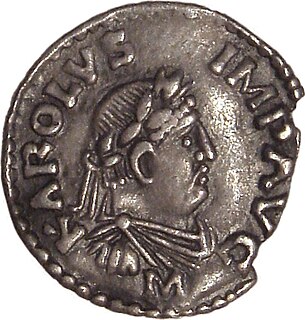
Charlemagne or Charles the Great was King of the Franks from 768, King of the Lombards from 774, and Emperor of the Romans from 800. During the Early Middle Ages, Charlemagne united the majority of western and central Europe. He was the first recognized emperor to rule from western Europe since the fall of the Western Roman Empire around three centuries earlier. The expanded Frankish state that Charlemagne founded is known as the Carolingian Empire. He was later canonised by Antipope Paschal III.

The Book of Psalms, commonly referred to simply as Psalms, the Psalter or "the Psalms", is the first book of the Ketuvim ("Writings"), the third section of the Tanakh, and a book of the Christian Old Testament. The title is derived from the Greek translation, ψαλμοί, meaning "instrumental music" and, by extension, "the words accompanying the music". The book is an anthology of individual Hebrew religious hymns, with 150 in the Jewish and Western Christian tradition and more in the Eastern Christian churches. Many are linked to the name of David, but modern scholarship rejects his authorship, instead placing the composition of the psalms to various authors writing between the 9th and 5th centuries BC.
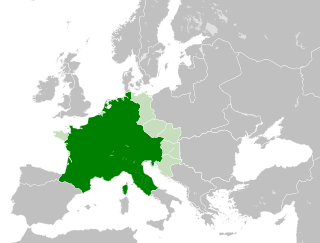
The Carolingian Empire (800–888) was a large Frankish-dominated empire in western and central Europe during the early Middle Ages. It was ruled by the Carolingian dynasty, which had ruled as kings of the Franks since 751 and as kings of the Lombards in Italy from 774. In 800, the Frankish king Charlemagne was crowned emperor in Rome by Pope Leo III in an effort to transfer the Roman Empire from east to west. The Carolingian Empire is considered the first phase in the history of the Holy Roman Empire, which lasted until 1806.

Song of Ascents is a title given to fifteen of the Psalms, 120–134, each starting with the superscription Shir Hama'aloth, or, in the case of Psalm 121, Shir Lama'aloth. They are also variously called Gradual Psalms, Songs of Degrees, Songs of Steps, songs for going up to worship or Pilgrim Songs.
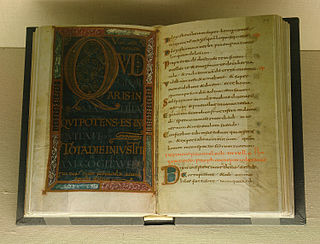
A psalter is a volume containing the Book of Psalms, often with other devotional material bound in as well, such as a liturgical calendar and litany of the Saints. Until the emergence of the book of hours in the Late Middle Ages, psalters were the books most widely owned by wealthy lay persons. They were commonly used for learning to read. Many Psalters were richly illuminated, and they include some of the most spectacular surviving examples of medieval book art.
"Old 100th" or "Old Hundredth" is a hymn tune in long metre, from second edition of the Genevan Psalter. It is one of the best known melodies in many occidental Christian musical traditions. The tune is usually attributed to the French composer Louis Bourgeois.

A metrical psalter is a kind of Bible translation: a book containing a metrical translation of all or part of the Book of Psalms in vernacular poetry, meant to be sung as hymns in a church. Some metrical psalters include melodies or even harmonisations. The composition of metrical psalters was a large enterprise of the Protestant Reformation, especially in its Calvinist manifestation.
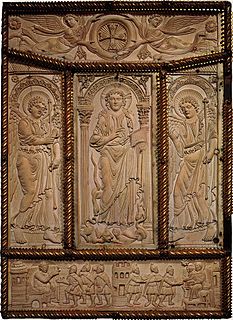
Carolingian art comes from the Frankish Empire in the period of roughly 120 years from about 780 to 900—during the reign of Charlemagne and his immediate heirs—popularly known as the Carolingian Renaissance. The art was produced by and for the court circle and a group of important monasteries under Imperial patronage; survivals from outside this charmed circle show a considerable drop in quality of workmanship and sophistication of design. The art was produced in several centres in what are now France, Germany, Austria, northern Italy and the Low Countries, and received considerable influence, via continental mission centres, from the Insular art of the British Isles, as well as a number of Byzantine artists who appear to have been resident in Carolingian centres.

Pahlavi is a particular, exclusively written form of various Middle Iranian languages. The essential characteristics of Pahlavi are:

The Genevan Psalter, also known as The Huguenot Psalter, is a metrical psalter in French created under the supervision of John Calvin for liturgical use by the Reformed churches of the city of Geneva in the sixteenth century.

The Latin Psalters are the translations of the Book of Psalms into the Latin language. They are the premier liturgical resource used in the Liturgy of the Hours of the Latin Rites of the Roman Catholic Church.
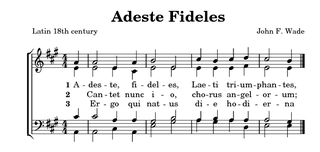
A hymn tune is the melody of a musical composition to which a hymn text is sung. Musically speaking, a hymn is generally understood to have four-part harmony, a fast harmonic rhythm, with or without refrain or chorus.
A kathisma, literally, "seat", is a division of the Psalter, used in the Eastern Orthodox and Byzantine Rite Catholic churches. The word may also describe a hymn sung at Matins, a seat used in monastic churches, or a type of monastic establishment.
Charlemagne (742/747–814) was King of the Franks from 768 to 814 and Emperor of the Holy Roman Empire from 800 to 814.

The Montpellier Psalter is one of the oldest Psalters from the Carolingian era and was made in the 8th century in the then-Bavarian Mondsee Abbey during the reign of the Agilolfings and was supposedly originally dedicated to the Bavarian ducal family of Tassilo III of Bavaria. The book saw a turbulent history and is now held at the Bibliothèque Interuniversitaire in the medicine faculty building at Montpellier, under the shelfmark H. 409.

The Stuttgart Psalter is a richly illuminated 9th-century psalter, considered one of the most significant of the Carolingian period. Written in Carolingian minuscule, it contains 316 images illustrating the Book of Psalms according to the Gallican Rite. It has been archived since the late 18th century at the Württembergische Landesbibliothek in Stuttgart.
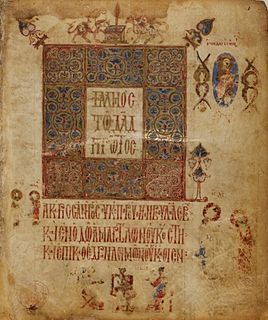
The Theodore Psalter is an illustrated manuscript and compilation of the Psalms and the canticles, or Odes from the Old Testament. "This Psalter has been held in the British Library since 1853 as Additional 19.352," wrote Princeton Art History professor Charles Barber in his first essay that is a companion to the Theodore Psalter E-Facsimile. Barber called the Psalter, "One of the richest illuminated manuscripts to survive from Byzantium."

The Dagulf Psalter is a late 8th-century Carolingian manuscript, and is one of the earliest examples of a codex emanating from the Court School of Charlemagne. The 161 page codex is written entirely in golden Carolingian minuscule script, and contains the Old Testament Psalms as well as a selection of Frankish Canticles. The Psalter is believed to have been created by the scribe Dagulf in 793-795 CE as a gift from Charlemagne to Pope Adrian I.
Golden Psalter may refer to:

The Psalter of Charlemagne is an 8th-century Latin manuscript containing the Gallican Psalter with litanies, collects and a tonary.